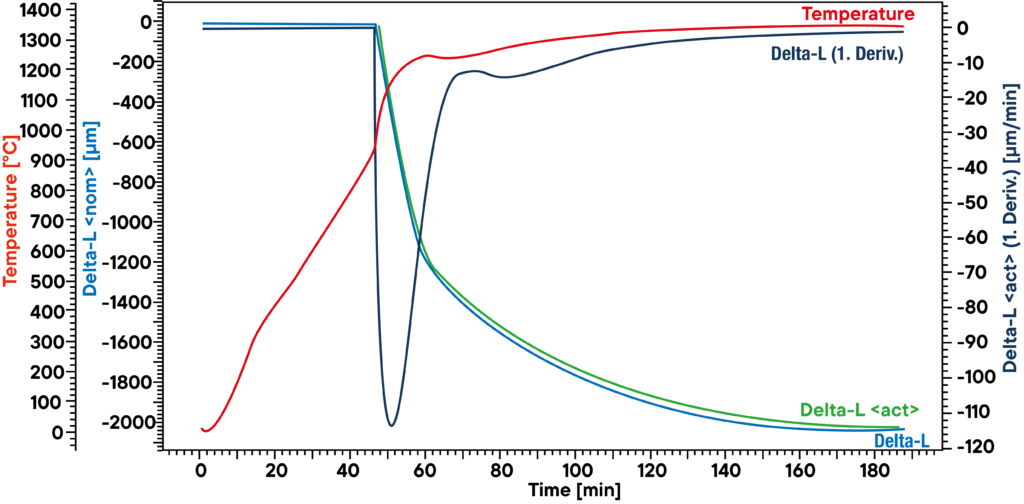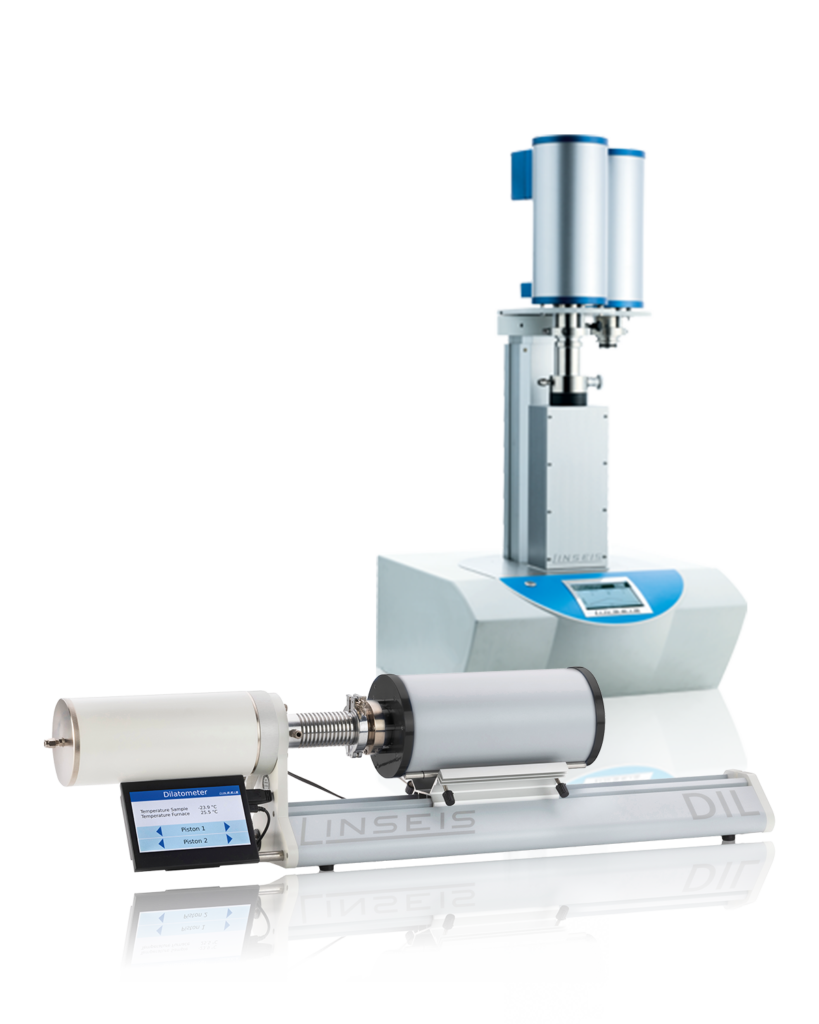In production processes of high-tech ceramics, a simulation of sinter processes is of high interest. It is very important to know the ideal sintering rate and temperature. Besides simulation, measurement and experimental optimization of sinter conditions is a frequently used technique.
When using the optional software package RCS (Rate Controlled Sintering) it is possible to program controlled sintering with a dilatometer as per PALMOUR III theory. The following application shows the sintering process of ZrO2 green body, a typical ceramic raw material.

In this experiment, the sinter rate was defined by RCS software and was programmed to be kept constant. The red curve shows the temperature of the sample and therefore the heating rate. The blue and green curves show the change of length, the purple curve is the derivative of the length change.
The sample was heated linear in a DIL L75 horizontal dilatometer. After 50 min, the sinter process started at around 900°C. The RCS software increased the heating rate to obtain a linear sintering until the sinter rate lowered significantly at around 60 min. The software then lowers the heating rate and the sample length finally reached a plateau at around 180 min, where the final density of the now burned ZrO2 is given.

